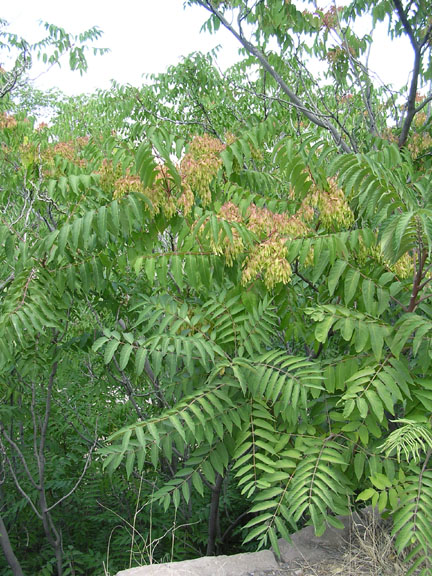|
Family: Simaroubaceae |
PLANT: Trees unarmed, polygamodioecious; bark gray. LEAVES: large, deciduous, odd-pinnately compound, malodorous when bruised. INFLORESCENCE: a large terminal panicle. FLOWERS: malodorous (especially the staminate ones); calyx lobes 5-6; petals 5-6; stamens 10-12 (staminate flowers) or 2-3 (perfect flowers); ovary 2-5-lobed. FRUITS: samaras, 1-5 per flower, each developing from a carpel, more or less pendulous. NOTES: Ca. 15 spp.; e Asia, ne Australia. (Supposed oriental [Moluccan] name meaning tree of heaven.) REFERENCES: Brasher, Jeffrey W. 1999. Simaroubaceae. Ariz. - Nev. Acad. Sci. 32(1). Incompletely dioecious; fls 5-merous; stamens 10 (fewer or none on fls of female trees); carpels 2-5, united at the axis only, each with a single ovule, maturing into separate samaras with the seed near the center; trees with pinnately compound lvs and malodorous fls in large terminal panicles. 10, Old World. Gleason, Henry A. & Cronquist, Arthur J. 1991. Manual of vascular plants of northeastern United States and adjacent Canada. lxxv + 910 pp. ©The New York Botanical Garden. All rights reserved. Used by permission. |


